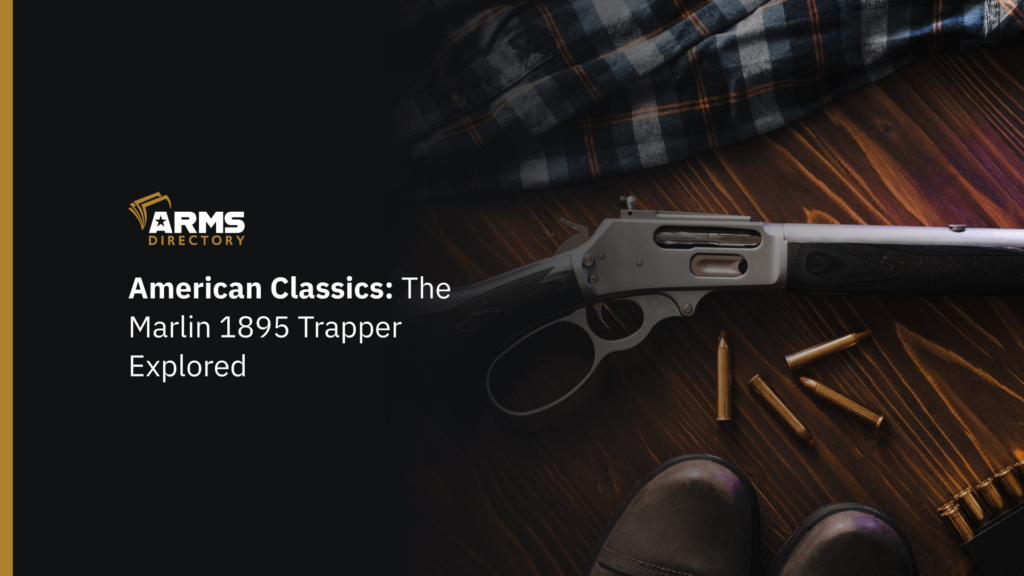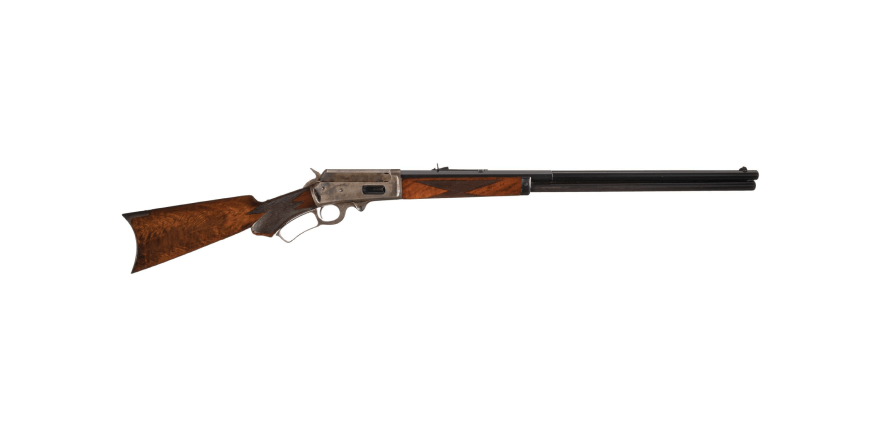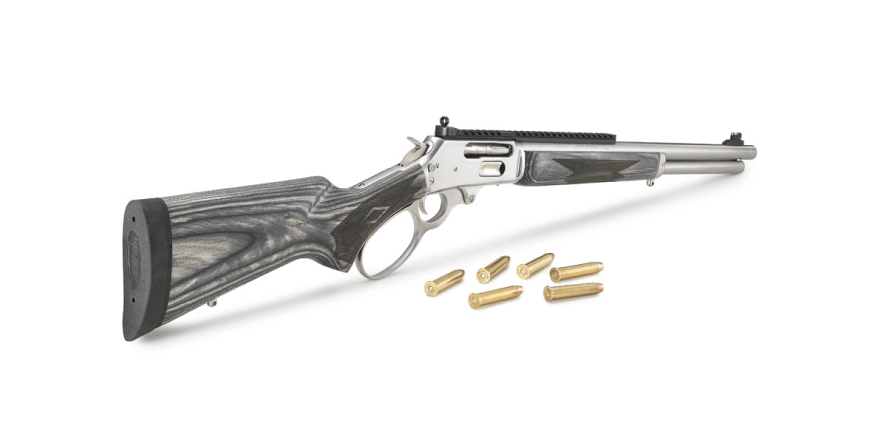
American Classics: The Marlin 1895 Trapper Explored
The Marlin 1895 Trapper is a true American icon – a rifle that has stood the test of time. Birthed from the brilliant mind of Lewis Lobdell ( L.L.) Hepburn in the late 1800s, this lever-action was crafted to conquer the rugged frontier.
It made history as the first to chamber the potent 45-70 cartridge, even before the famed Winchester. Its merit was proven during the Alaskan gold rush of 1898, where it earned its iconic status.
Yet, the Trapper never quite basked in the same historical glory as firearms from celebrated names like Colt and Winchester. Hollywood mostly ignored it in movies, and writers neglected it in novels. That is, until 2015 when Chris Pratt’s character Owen Grady hunted dinosaurs in “Jurassic World” with the 1895SBL – an impressive modern redesign of the original 1895 rifle.
While the Trapper found success from coast to coast, it remained inextricably linked to the tough Alaskan wilderness where self-reliance is highly valued. The reasons are clear: big-game hunting capabilities, huge reliability, lasting durability, and a compact, no-nonsense design.
This article is about the Marlin 1895 Trapper’s history and how it still lives to this day – from its origins to its modern reinvention by Ruger, this piece of American craftsmanship isn’t going anywhere anytime soon. Keep on reading.

The History of The Marlin1895 Trapper
In the late 1800s, a visionary inventor, L.L. Hepburn was hard at work creating a rifle that could help tame the American frontier. Marlin Firearms Company had already established itself as a force with successful lever-action rifles like the Burgess-patent Marlin in 1881. But Hepburn’s design would raise the bar.
Hepburn was born in 1832 in Colton, New York. As a young man, he apprenticed as a blacksmith but gunsmithing was his true calling. Around 1855, he began crafting muzzle-loading rifles right from his upstate New York home. Over the next decades, he wore many hats – a country gunmaker, a lead designer for Remington, and ultimately, the genius behind iconic Marlin rifles.
His original 1895 Marlin Trapper was essentially identical to the 1893 model. However, Hepburn optimized it for lengthier, higher-pressure cartridges that offered flatter trajectories and longer effective ranges. This allowed the 1895 Trapper to reliably cycle formidable muscle like the 45-70 Government cartridge while maintaining the trim, portable stature that had made Marlin levers so handy in the field.
Released in 1895, the Marlin Trapper was the first lever-action to be chambered for the powerhouse 45-70 cartridge. This big-bore prowess made it a formidable brush gun, capable of taking down larger game like moose, grizzlies, and other serious threats pioneers encountered as they pushed westward.
While undeniably potent, the Trapper’s true novelty lay in its compact 22-inch barrel and trim profile. This allowed for easier carrying and maneuverability in thick timber and unforgiving terrain. Weighing in at just over 7 pounds, it delivered a perfect blend of portability and knockdown power.

As the Trapper gained a following among trappers, hunters, and settlers making their way through the Rockies and into Alaska, some truly legendary tales began to emerge. Like the tale of an Alaska trapper who used his Marlin to fend off an attacking grizzly at nearly point-blank range. His survival was credited to the rifle’s heavy punch.
The original Model 1895 was chambered for large black powder cartridges like the .45-70, .40-65, and .38-56. It also handled the .45-90 and .33 WCF. Early models had a color case-hardened receiver, though a blued version was available too.
With a 26″ barrel, the 1895 had an overall length of 35.5 inches. Shorter carbine and 15″ barreled versions were made as well, with the smaller ones having a saddle ring on the receiver. A key difference from the Winchester was the Marlin’s square bolt, side ejection, and solid-top receiver designed for adding a peep sight.
During the Great Depression (1936) Marlin released the Model 36, which kept the solid-top, side ejection design of 1895, but was too expensive to manufacture. The square bolt system required extensive milling. After a 12-year run, it was redesigned into the more affordable Model 336 in 1948.

The updated Model 336 had some key improvements over the 36. It had a round bolt instead of the complex squared design, an improved spring steel extractor, and a window in the receiver for side ejection and single loading. This stronger, streamlined receiver helped make the 336 a success with over 5 million produced. It’s still going strong today.
In 1972, they reintroduced the Model 1895 concept but updated it within the 336 receiver design. This new one had a 22″ barrel, 4-shot magazine, straight stock, and buckhorn sights with a bead front. The receiver had scope mounts and a bead-blasted top for reduced glare. At 40.5 inches and 7 lbs, it made for an ideal woods rifle. The resurrected 1895 gave hunters a compact, potent brush gun built on Marlin’s reliable 336 action.
In 1980, Marlin offered a Sporter version of the 1895, the Model 1895S. It had a pistol grip stock with white line spacers, a redesigned round lever, and a ramped front sight with a Wide-Scan hood. Quick-detach sling swivels were included. In 1984, the company added a cross-bolt safety to its lever guns, changing the Sporter’s name to 1895SS.
Big bore lever actions are popular again today – currently, there are at least eight variations of the Marlin 1895 model. Custom builders are adding upgrades and Marlin 1895 Trapper accessories like large levers, aftermarket sights, and synthetic stocks.
New Life: The Ruger Marlin 1895 Trapper 45-70
In late 2020, during Remington’s bankruptcy auction, Ruger won the bid to buy Marlin’s assets for around $28.3 million. The purchase of Marlin Firearms by Sturm, Ruger & Co. was a big deal in the gun world as it allowed them to add Marlin’s popular hunting rifles to Ruger’s lineup of firearms. The 1895 Trapper and other Marlin guns are legendary among shooters, so it made sense for a major company like Ruger to scoop them up and ensure these classic American rifle designs wouldn’t disappear.
The first Marlin model reintroduced by Ruger in 2021 was the iconic 1895 Trapper lever-action rifle. This signaled that Marlin’s legendary lever guns were back and better than ever. Using modern manufacturing while staying true to the original design, the new Trapper showed Ruger’s commitment to quality firearms.

The Ruger-made 1895 Trapper’s impressive specs appeal to both traditional shooters and modern hunters:
- Big-bore 45-70 Gov’t caliber
- 5+1 capacity
- 16-inch barrel
- 34-inch overall length
- 7.1 lb weight
- Laminate black stock
- Stainless steel construction
- Adjustable Skinner sights
- 1:20″ twist rate
- $1,449 MSRP
Updated Features
Ruger has added some cool upgrades to the classic Trapper design:
- A receiver-mounted peep sight for fast targeting
- Satin stainless finish to reduce glare
- Threaded barrel for brakes or suppressors
- CNC machined receiver, lever, and trigger guard for strength
The Ruger-made Marlins have a few unique markings:
- “Mayodan, NC” location on the barrel
- “RM” prefix on the serial number
- Laser-engraved horse and rider logo on grip
- Red/white bullseye on buttstock instead of black/white
Wrap Up
The Marlin 1895 Trapper was and still is an American classic, born from the brilliance of L.L. Hepburn and the rugged frontier spirit of the pioneers. From its debut in 1895 to its modern revival by Ruger, this iconic lever-action has survived the test of time. With its potent 45-70 chambering, compact size, and reliable performance, the Trapper remains an essential gun for generations of hunters and shooters.

![The Ultimate Shooting Accessories for Every Weapon [A 2023 Beginners Guide]](https://vault.armsdirectory.com/wp-content/uploads/2023/08/30071223/The-Ultimate-Shooting-Accessories-for-Every-Weapon-A-2023-Beginners-Guide-1024x576.png)



![Gun Registration Requirements by State [What You Need to Know]](https://vault.armsdirectory.com/wp-content/uploads/2023/10/27073220/Gun-Registration-Requirements-by-State-What-You-Need-to-Know-1024x576.png)